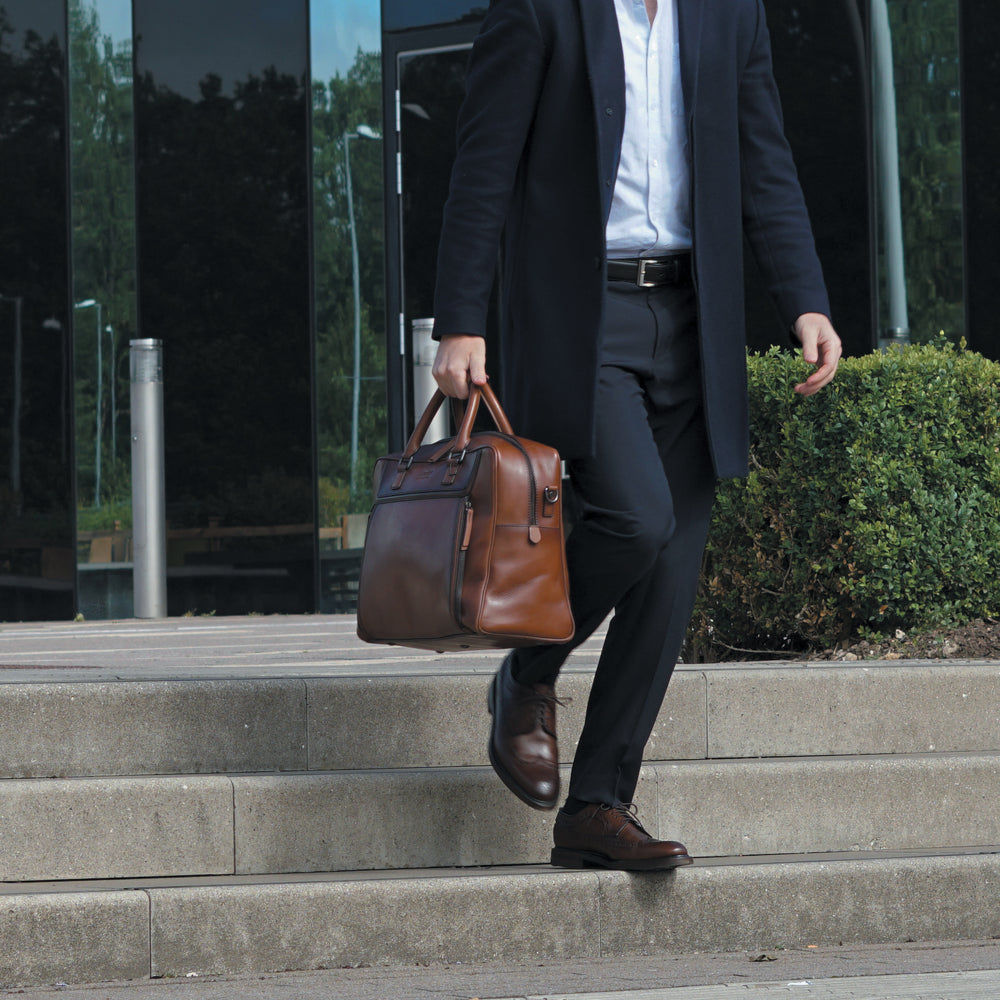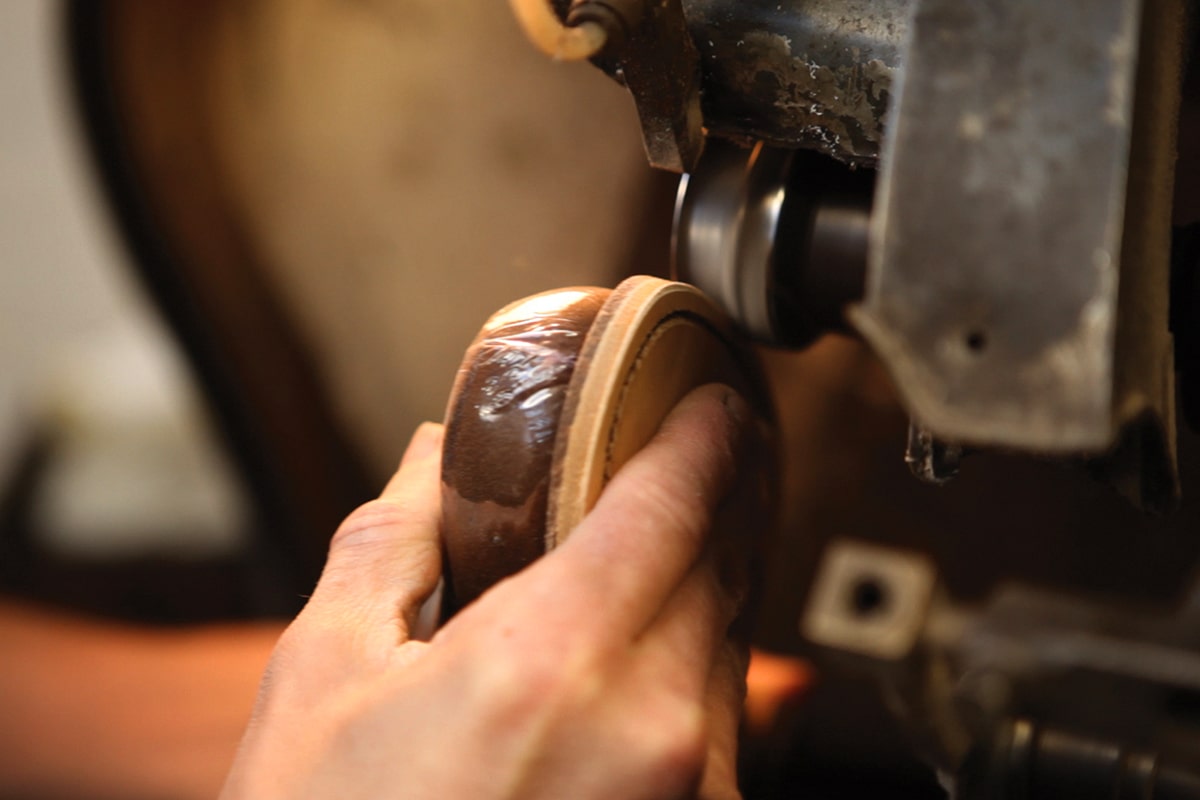Shoemaking Operations: Part 2
5. Sole Stitching
At this point of the process, the sole is stitched to the welt (the strip of leather that is stitched to the upper and the insole). The soles are lock stitched, using two separate threads, for maximum strength. Before this happens, the space between the welt and insole are filled with cork, which gives extra comfort as it moulds to the wearer’s foot and also provides the shoe with great insulation and flexibility.
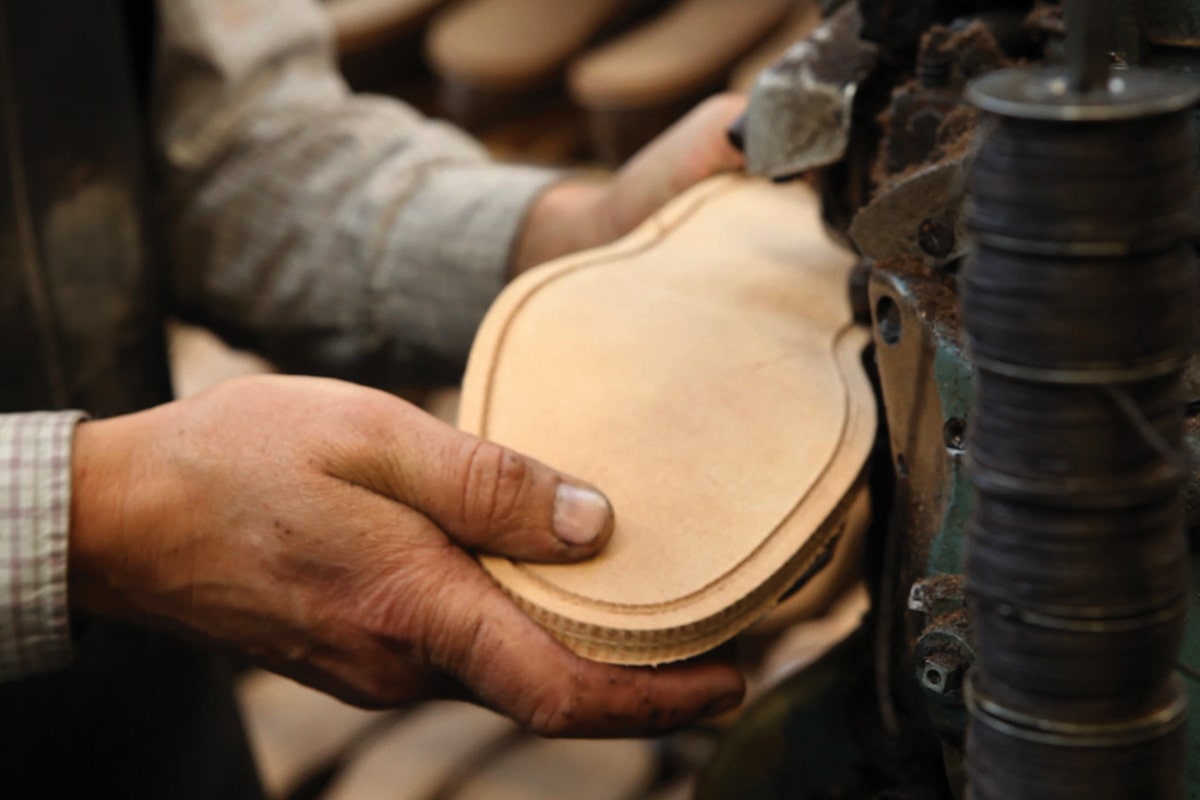
6. Edge Trimming
The edges of the soles are trimmed to shape before they can be stained. This is a highly skilled operation which is performed ‘freehand’. Not only do both shoes in the pair have to look identical, but the craftsman has to be sure not to trim too much off. Later they will be waxed, ironed and polished.
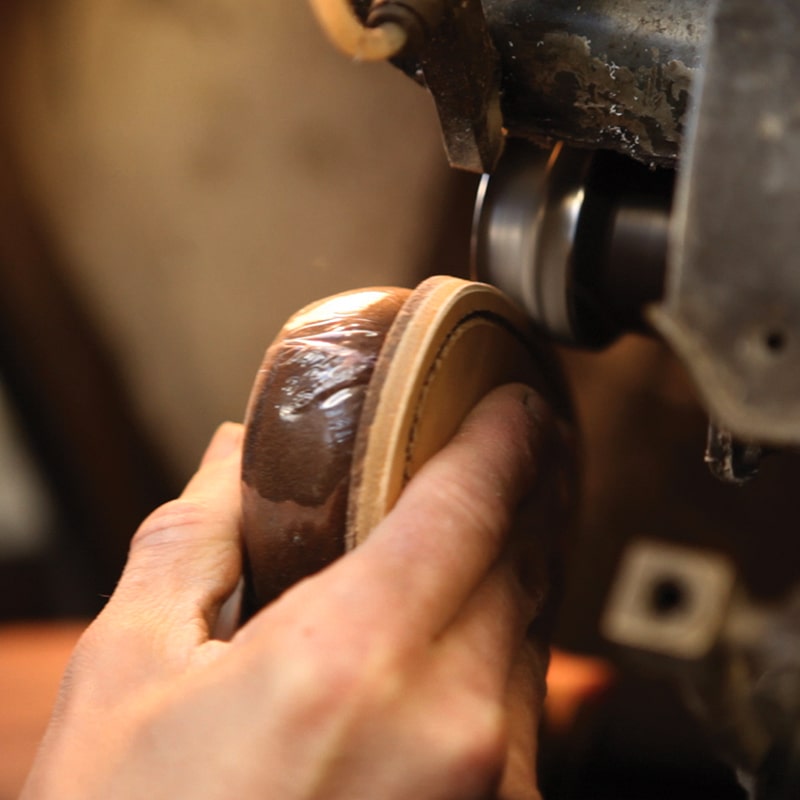
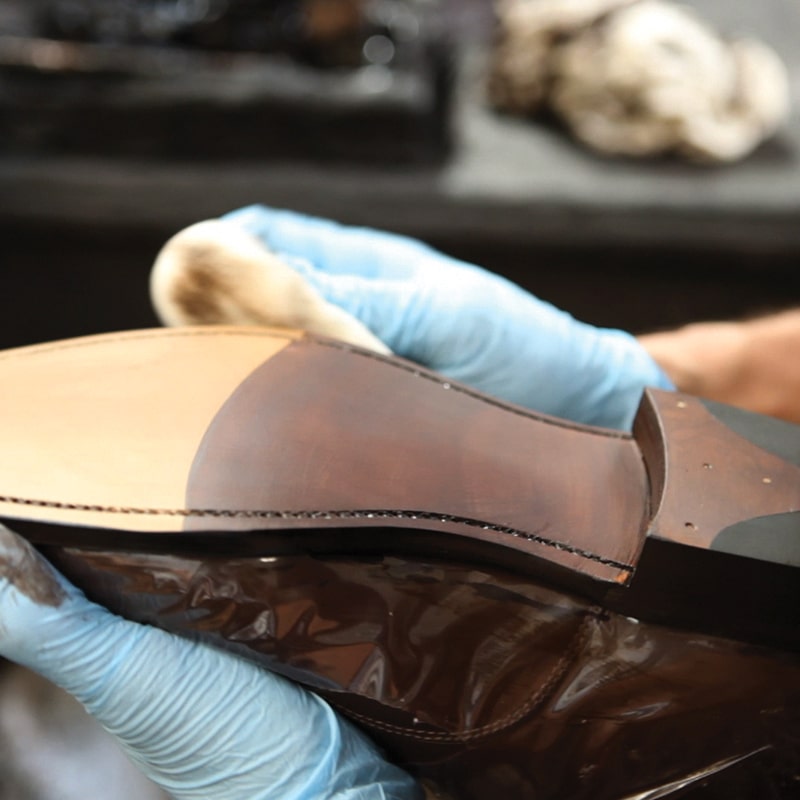
7. Sole Staining
The sole bottoms are then stained and polished. These will be stamped and wheeled at a later stage to add the finishing detail and give the soles a neat, striking finish. Again, this is all done ‘freehand’ and requires very skilled craftsmen with years of experience in the art.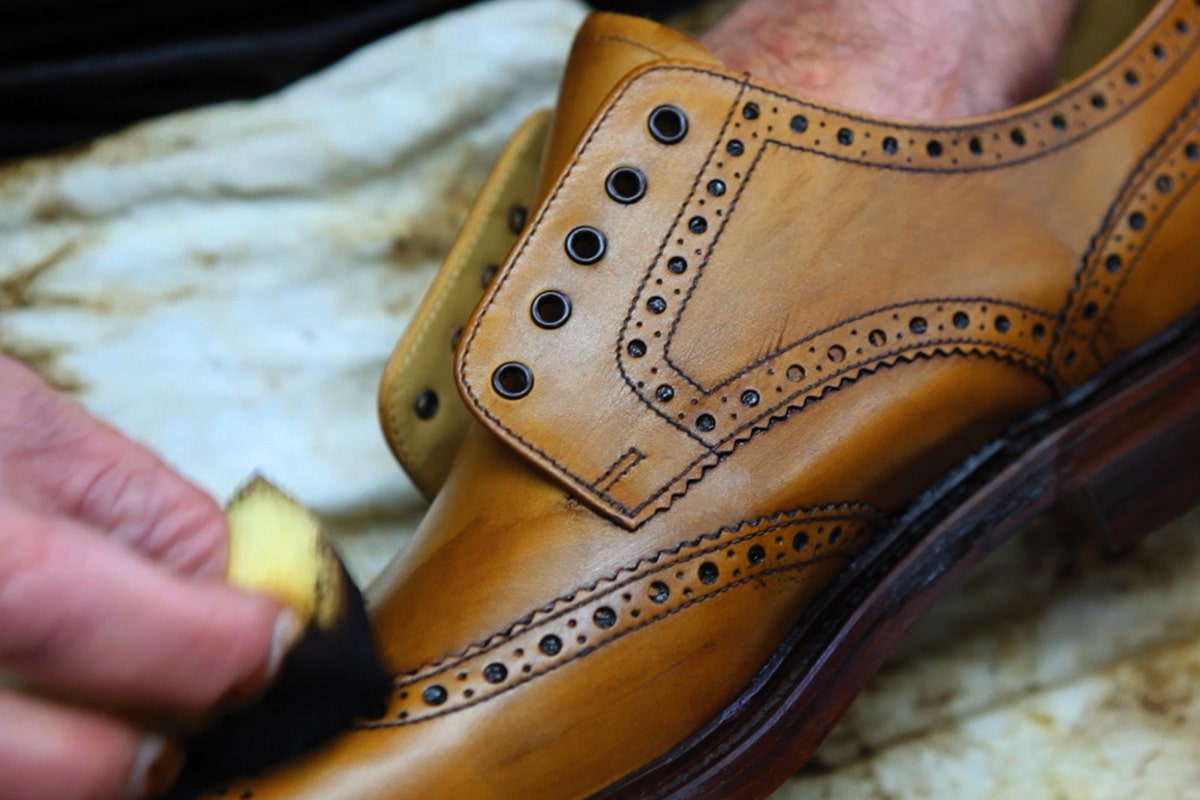
8. Burnishing/Dressing
The final burnishing, dressing and polishing operations are very time consuming and have to be done entirely by hand. Once these are completed, the shoes are laced and boxed and ready to go to their new owners.
We hope these posts have given you an insight into the time, care and skill that goes into making each and every pair of Loake shoes. If you have any other questions regarding the process, be sure to leave a comment below. We're eager to connect with you and share more about the artistry that defines Loake.
Explore our exquisite range of Goodyear welted footwear and step into a world where quality meets timeless elegance.












